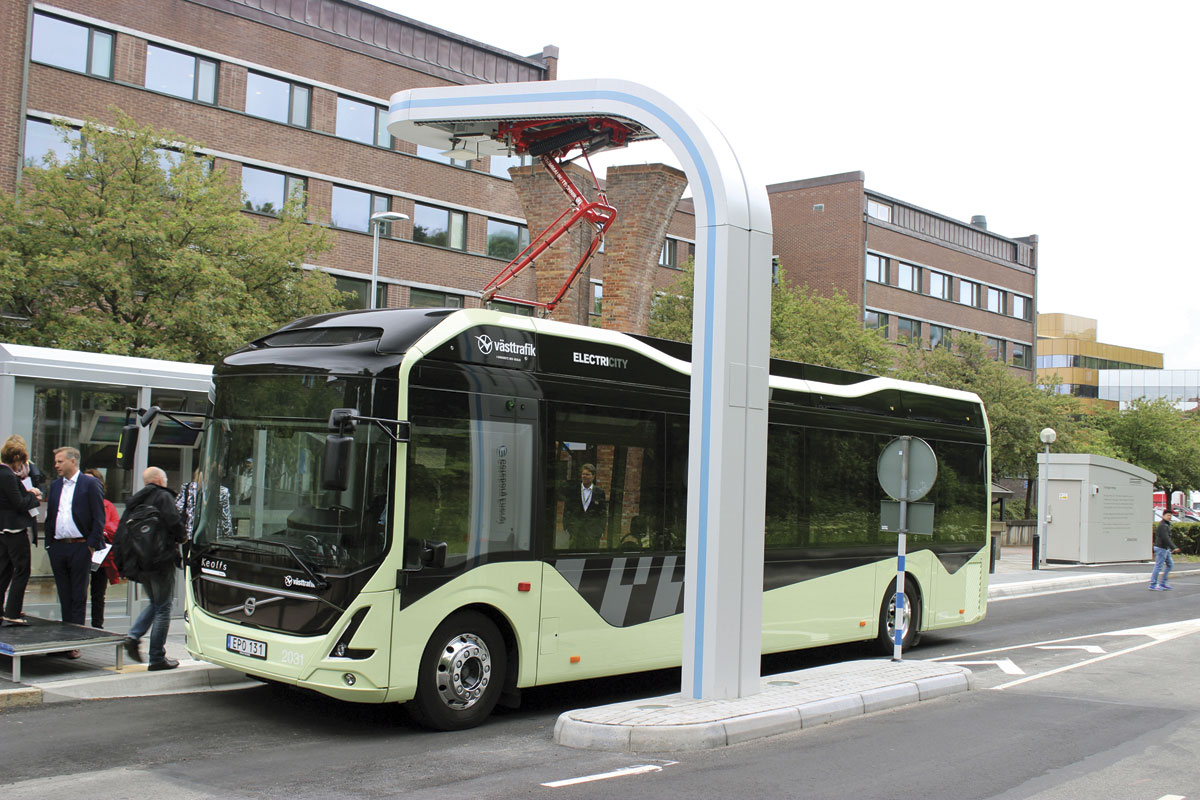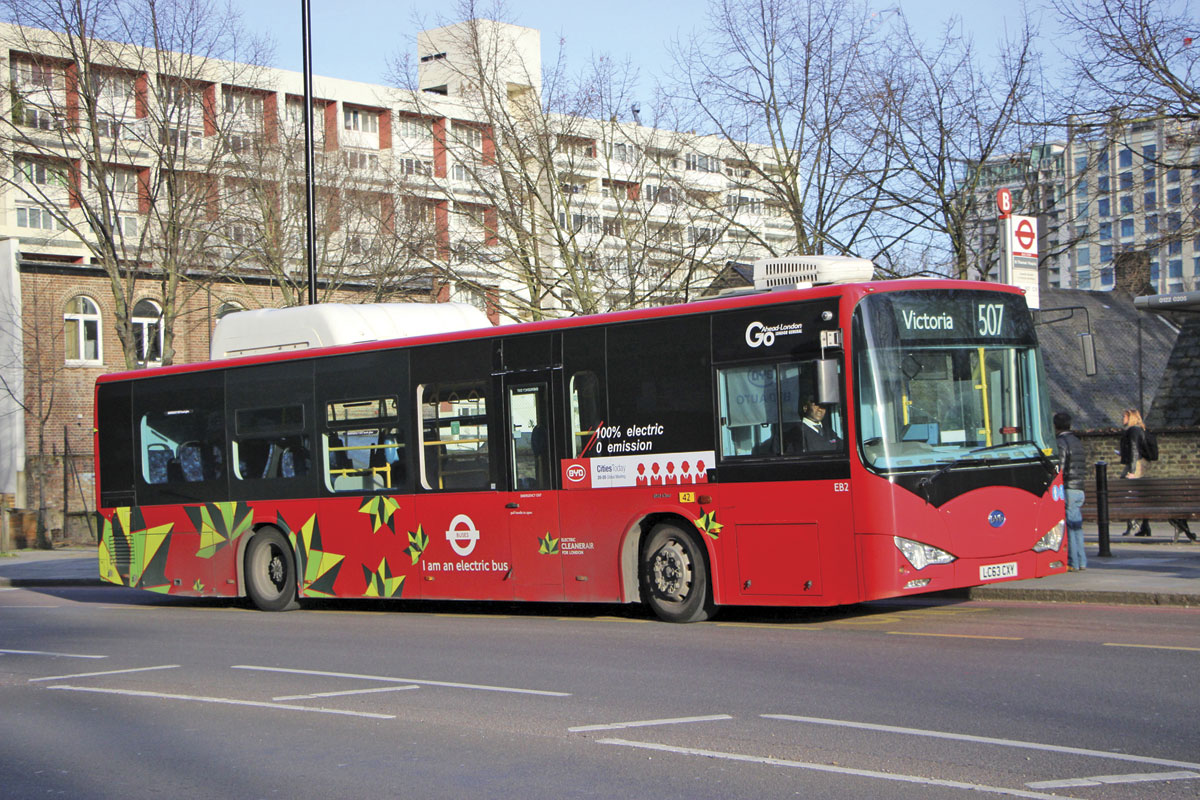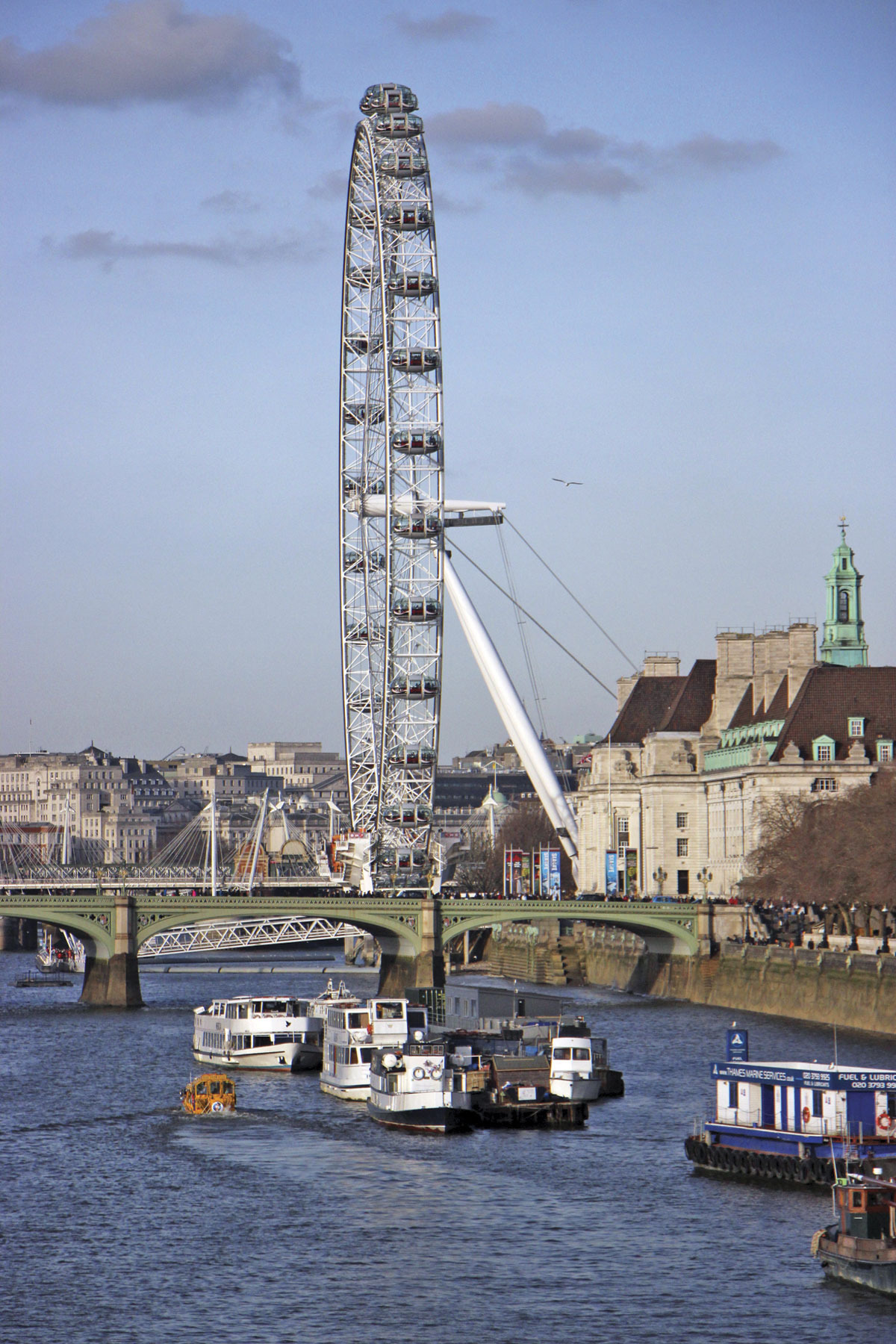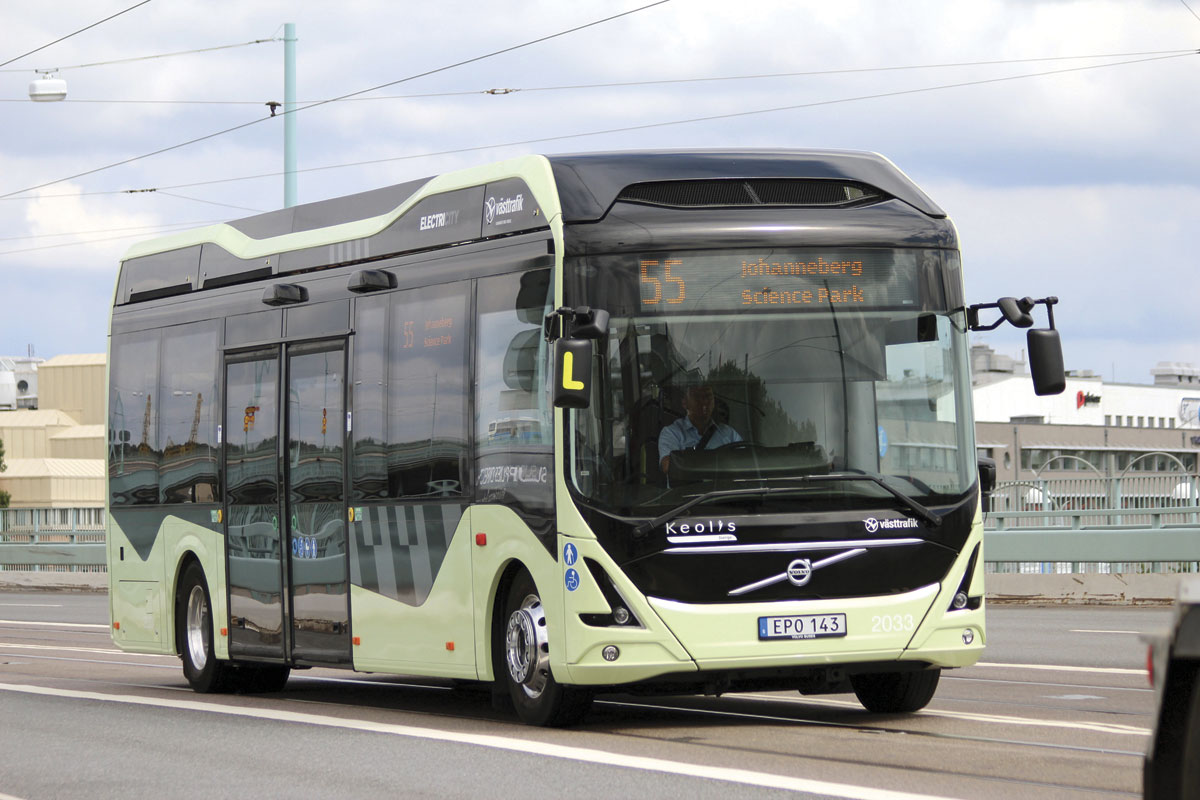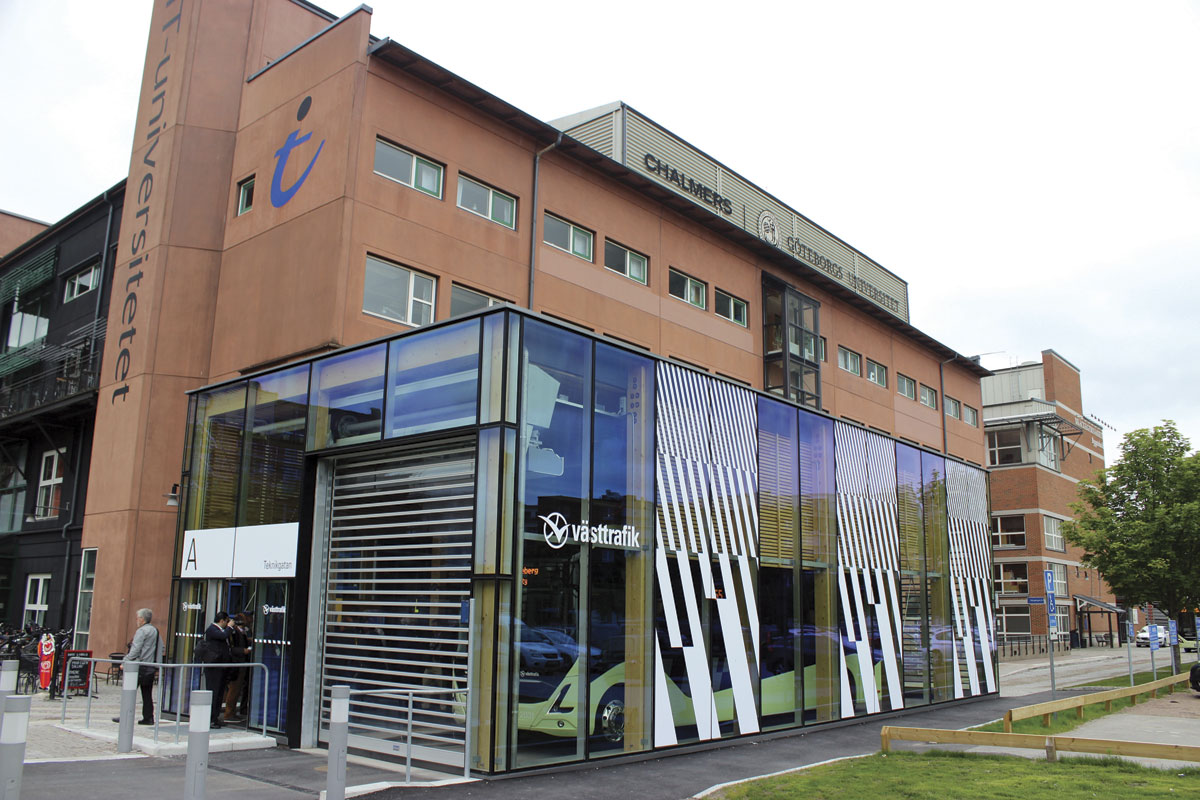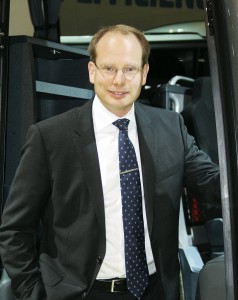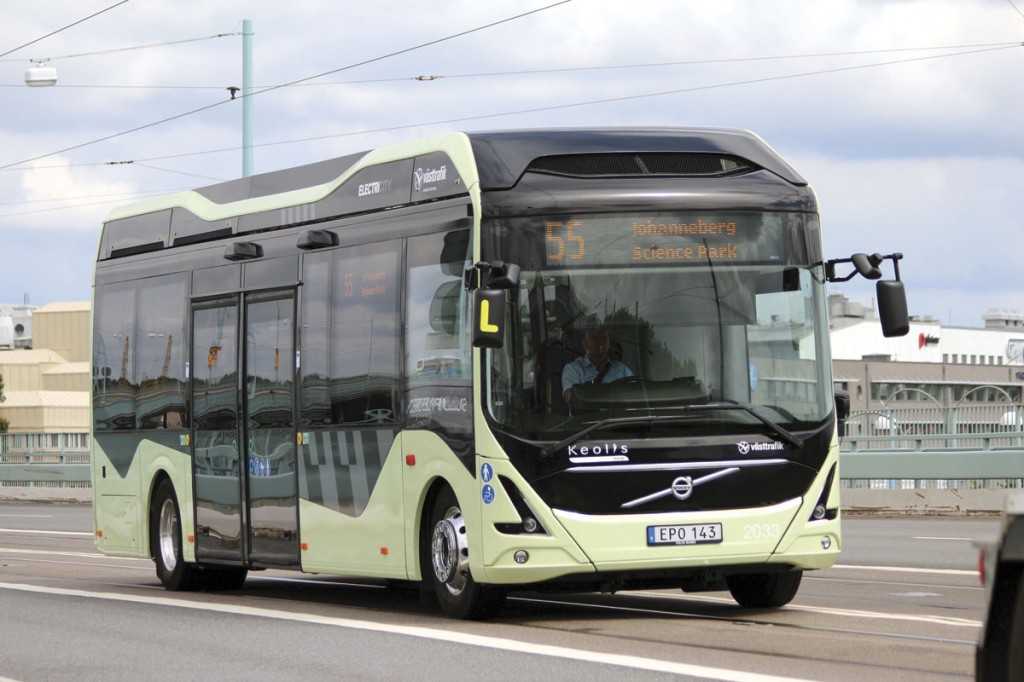Clean and green – The future of local bus services
Volvo panels look at the issues surrounding the adoption of electromobility
Over the past weeks, Volvo has held two round table discussion events on the subject of sustainable transport. The first was staged in the committee room of Manchester’s imposing Central Library on 10 May and the second at the RICS Centre in London on 10 June. At both a small group of key players from operators and local authorities as well as informed observers and stakeholders joined senior Volvo representatives to discuss issues pertinent to the introduction of City mobility solutions and electro mobility products in the UK’s cities.
I was a participant in the first two panels and this article has been compiled from comments made at both. It is in no way comprehensive and excludes many valid contributions but it does highlight some of the major issues raised.
Volvo had produced a discussion document in advance that outlined its position and the issues as it sees them in order to equip those participating. At both events, the proceedings were chaired independently; in Manchester by Andrew Bounds of the Financial Times and in London by David Fowler, Editor of Transport Times.
After each delegate introduced themselves, discussions began with an introduction from Håkan Agnevall, President of Volvo Buses, who said in Manchester, ‘From our perspective we are at a very interesting and exciting time for public transport, both in the world but particularly in the UK. Our view is that we are standing just at the beginning of the biggest technology shift in decades. On top of that, in the UK you also have the regulatory changes with devolution and so forth. A lot of interesting things are going to happen and that really triggered us to reach out to you, to understand your view of the future, how you perceive it and give our perspective of what we think some of the technology can offer and where we stand right now. That is the purpose of the discussion.’
‘The other proposal that I would put forward as we move into electromobility, from our side we believe that is a major path in the future, is that it will require a new way of cooperation. It will broaden the number of stakeholders that are involved in public transport because we need to address the charging infrastructure. With that comes a broader spectrum of stakeholders. That is why we are here.’
Håkan outlined Volvo’s position in the UK, and said that research on truck and bus starting a decade ago had led Volvo to conclude that the future for city bus and civic vehicles lay with electric drivelines. The company had invested heavily in electric technology, the first manifestation of which was the hybrid buses the UK was familiar with. There were now two additional tools on offer: the electric hybrid, which retains a diesel engine and has a bigger battery that you charge at the end station to get a greater electric range, and the full electric vehicle with only batteries. By combining these three tools you could produce an optimal solution for each city.
Volvo was looking to provide a full solution and had teamed up with the infrastructure suppliers ABB and Siemens to ensure that it could do so. In addition, it had proposed that rather than buying the vehicle batteries required, operators would have packages to support the purchase and replacement of batteries for the operational life of vehicles. Electromobility was not new, it had been around 100 years, but what was new was that the systems were now robust enough to cope with heavy duty round the clock bus usage. Another cornerstone of the Volvo proposition was a belief in open interfaces, in contrast to the Tesla approach, with charging systems that allowed access to the products of all manufacturers.
It was his belief that this big technology shift meant a new way of doing business. It was a new way of interacting. Volvo knew the technology was mature and it had an interesting proposition but ‘we need to learn together how to use both in sustainable and financially viable ways.’
He stressed the importance of holding pilot trials, of sharing the information and maintaining a more in-depth dialogue and said in parts of the world these smaller pilot schemes were becoming larger scale operations involving as many as 100 buses.
There were different ways you could charge electric vehicles, ‘You can charge it overnight, you can fast charge it and you can charge it inductive or conductive. There are a plethora of technologies. We have been trying to find out what type of charging provides you with the robustness that is needed with the power uptake of the grid that is normally available. What that analysis has led us to is that we firmly believe that there is not only one route for charging. There will be several. One major route will be opportunity fast charging. That means that you will charge at the end stations for three to six minutes and then you are ready to go. With those three to six minutes, it is also set up that if you miss the charging at the other end station you can actually come back, so you can have a bit of spare.’
In bus products terms it would not be one size fits all. ‘In our view you need the three tools in the tool box because in the city core you will maybe have zero emission zones and you will have the full electric vehicles. Then you will have lines that run through and they will charge at the end stations and the end stations will be within those zero emission zones. However, you will have other lines going from a suburb to a city centre and where you want to run full electric in the centre of a suburb, you run a hybrid mode with a combined diesel operation into the city centre where you have another zero emission zone. This is where this electric hybrid with a diesel range extender comes in. Once again you will charge it at the end stations. The vehicle has intelligence to know where it should run full electric and where it should run on a combined diesel hybrid mode.’
Mark Munday, First Bus Engineering Director, noted two points in what Hakan said that were ‘fundamentally important’.
‘First, you have to treat it as a transport system and not just procuring a vehicle,’ he said. ‘Part of that is that it needs significant programme management and systems integration. That in itself is a skill set both in terms of resource and capability. I think the proposition of a turnkey solution and a prime provider is a key enabler to that. That ticks a box from my perspective. It does not really matter who or how that happens but I think that proposition certainly is important. Without that there would be significant risk in delivering a system.’
‘The second point connected to that is the financial model and de-risking it. Certainly at the high level of maturity that we have got at the moment, there is still significant financial risk due to battery life, understanding battery life and the other electrical components. A model that can de‑risk and put some certainty into that, whether that is a local authority, the operator or whoever, again is a key enabler going forward.’
He added, ‘There are other aspects behind the scenes in terms of electrical infrastructure and how much energy is there. However, I think they are second order things and particularly they are de-risked through the model in terms of where you have got flexibility in options and in terms of the extended use of the hybrid and diesel. That gets us through that in the short term.’
Michael Renshaw, Executive Director at TfGM, said, ‘At the moment Greater Manchester relies on a fleet from various operators of around 2,000 vehicles,’ noting, ‘That does not lend itself to opportunity charging and requires buses to be able and available to be operated for up to 18 hours of the day.’ He thought we were ‘on a journey, and truthfully, we are still probably on the first third of that journey, relative to potential and the long term.’ Agreeing, Mark Munday said it was important we knew where we were on that journey and where we were going, otherwise expectation management might be challenging.’
It was pointed out that although electromobility is the long term aim there were major air quality gains to be made in the shorter term by upgrading older vehicles to higher emission standards.
Ian Tarran, Arriva’s Engineering Director, pointed out that more could be done by the authorities because, ‘We are getting mixed messages from government… I can still find a Euro5 engine. I am not doing so, but I can still buy a Euro5 engine, so somebody needs to tell me I cannot buy one, because there will be plenty of people out there who are buying Euro5s. There were major air quality gains to be made in the shorter term by upgrading older vehicles to higher emission standards.’
Michael Renshaw was against upgrading older buses because it did not raise the public profile of the bus.
Picking up on a number of points, Mike Weston, Director of Buses for TfL said, ‘I think the big driver, certainly in London, but I am sure it is the case in other cities across Europe, is air quality, at the moment: primarily air quality, not global warming and greenhouse gases. I am not saying that they are not linked, but the big driver is air quality. If you look at the press release that Sadiq issued within a week of becoming mayor, around the environment, it was really around local air quality. There is an issue there about balance. You need a balance of short/medium-term strategy and longer-term strategy. ’
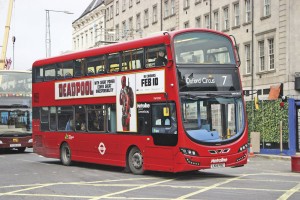
Diesel electric hybrids like this B5LH Wrightbus Gemini 3 seen running for Metroline on TfL’s route 7 will remain part of the toolbox in Hakan Agnevall’s opinion
‘We were at the front of the deployment of hybrid buses, but essentially most of those are electric buses with a range extender on board. At the other extreme, we have a small fleet of fuel cell buses, but they are electric buses as well. What is clearly happening is the electrification of the urban bus route. What is not clear is how it is electrified and how the energy gets onto the vehicle, so sometimes you have be a bit careful around the terminology. An electric bus is not competing with a hydrogen fuel cell bus, is not competing with a hybrid bus, because they are all electric buses. It is just about how you get the energy on board.’
Mike Weston said, ‘The Mayor’s longer-term strategy is to move towards full electrification of their fleets. There is a balance, because we have just finished, with the support of the operators and the financial support of the DfT, a financial programme to retrofit 2,200 Euro3s with SCRT that have reduced noxious emissions from buses by 20%. That is quite significant. Now, just to put that into context, that is a £33m programme that could have bought 95 electric buses. I have not done the calculation, but converting 95 diesel buses to full electric would not have saved 20%.’
London’s new Mayor, ‘Wants to push this quite aggressively in terms of the take-up of electric vehicles, but he also wants us to clean up the existing fleet, and I think that is the challenge for a lot of local authorities outside London, where to put the priority and their limited money in terms of achieving that.’
Mike pointed out that the whole fleet takes 12-15 years to renew and continued, ‘Probably TfL has been in a fairly lucky position, because it totally controls the network and it has the funding to support the whole network. It had the ability to do the early hybrid trials, which Volvo were a party to, and more expensive trials like fuel cells. We have the luxury of being able to do that sort of stuff.’ It was, ‘pretty clear that we have probably seen the last diesel double-decker bus, because if I was an operator who had won a contract from us in outer London, I am not sure I would go and buy a diesel double-decker, because the Mayor has already declared that he only wants us to buy hybrid double-deckers or electric from 2018, so the likelihood is that when contracts come back around in five years’ time, we will not be showing much faith to diesels. That is clearly a big stepping stone, but ultimately it is an electric bus. It just has a range extender onboard, and that range extender could change, over time, to something else.
Infrastructure
‘I want my bus to be able to do every method of charging, so it has that flexibility,’ said John Trayner, MD of Go-Ahead London, answering Hakan’s suggestion that there would not only be one way of charging electric buses but at least two. John added, ‘I went to Cologne two weeks ago, and their biggest challenge was almost the town planners and making this infrastructure look attractive, so that people did not go, “What the hell is that? It is ugly.” It is why trams have as much of a challenge in putting wires all the way through. They are not going for it. It is not pretty anymore. So you are right.’
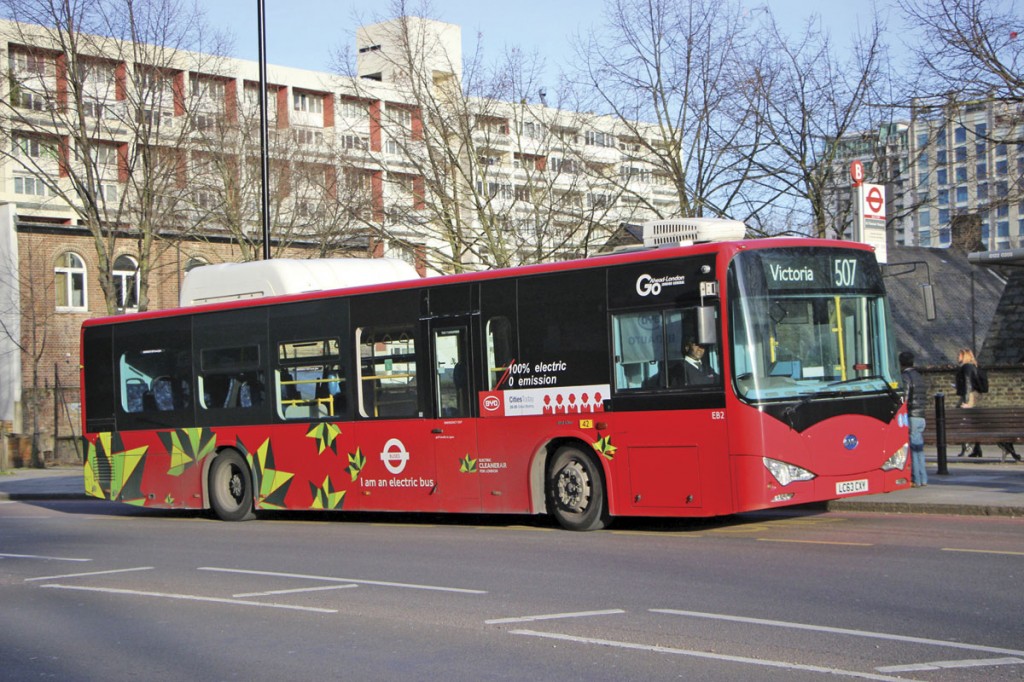
Go Ahead is shortly to begin running a fleet of over 50 electric buses from its Waterloo depot and the issues behind installing the necessary infrastructure have been challenging
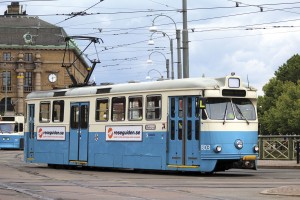
Hakan Agnevall made the point that, unlike electric buses, trams like this one in Gothenburg are far from silent. He should know, he lives next to a tram route
‘The other mayoral priority is housing. We have not got enough houses for all of these people to live in. I agree with you; the urban centres are only going to grow. Both Mike and I have a lot of land; they are called bus garages, where we park the vehicles every night and we might be able to charge them. However, in that airspace above, I also have a lot of space. If I build housing above that garage and we put the right power in in the first place, we could have the alternatives, with the right power that while they are asleep upstairs, I can charge my vehicles. That is the sort of partnership we are looking at already with some developers and UKPN that actually says the only way we are going to build this in the long term is by having that capacity in the right place that is effectively multi-purpose and can do two jobs.’
‘There is a whole industry that I am discovering, in that not only do I have to buy the power, but now there are people who want to buy that power back off me and put it back into something else. There is a big Sainsbury’s opposite my head office, and when they shut they will give me the power. These sorts of solution are probably going to be becoming the way around our problem.’
It was clear from the discussions that some very major challenges relating to charging infrastructure remain to be addressed before widespread adoption of electric vehicles in our cities can be contemplated. Michael Renshaw commented, ‘Greater Manchester historically has been very well equipped or resourced in the context of bus stations. It is a primary component of our network. We manage those quite tightly in the constraints of both demand and public perception. Operators only get a maximum five minute slot into the bus station. The thought of trying to turn bus stations into charging centres is problematic. Clearly from an operational point of view, the problems of trying to further expand timetables to ensure that as a minimum buses are there for five minutes is an issue as it is effectively recovery time of up to five minutes. It is not long before you start getting into the inevitable issue of almost over-scheduling resource in order to ensure this. The industry is not able to recover if it is fighting another problem, which as well as getting buses back in time is worrying as to whether the bus has got enough charge to go onto further journeys.’
‘I absolutely recognise something like Metroshuttle in the city centre would lend itself to opportunity charging. With the peaks and the inter-peak that we have got and the hours of operation which are framed around a 12 hour day, at one end that is entirely credible. If you look at something like the A6 and the 192 route, it almost does not stop as a service. Regarding the vehicle requirements, it is generally the 50 or 60 bus territory. Frankly, to me, that sort of solution in the long and medium term lends itself to a geofencing of an electric, hybrid or diesel hybrid type vehicle.’
The problem goes far beyond the time required for opportunity charging to take place as John Trayner, Ian Tarran and Mike Weston made plain.
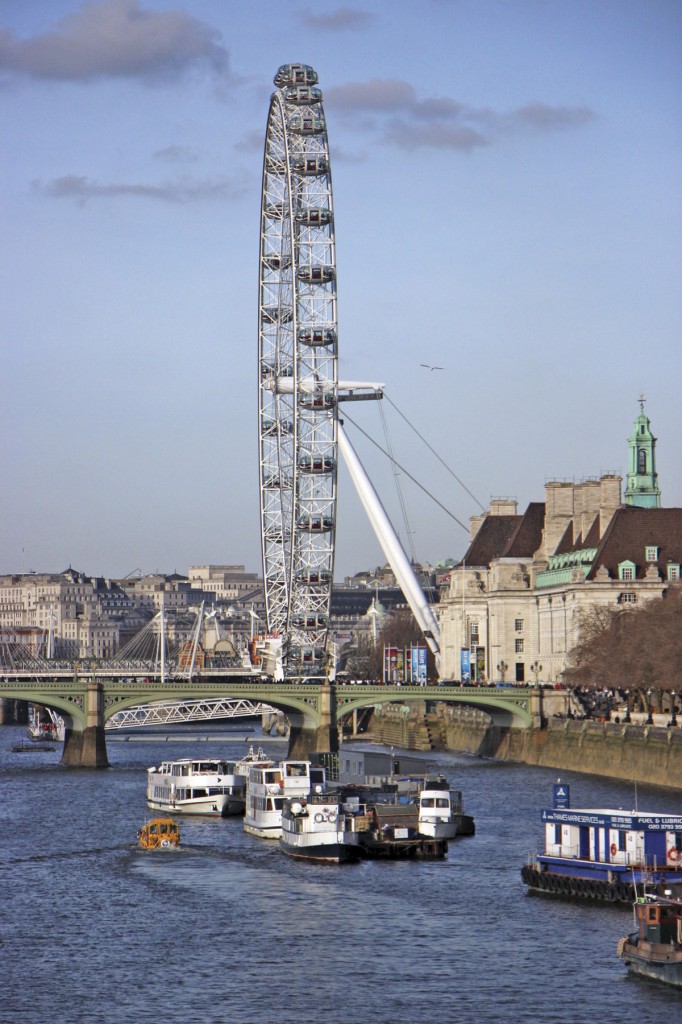
It has yet to be seen whether plugging in Go Ahead’s fleet of electric buses to recharge at night slows down the London Eye
John Trayner said, ‘The interesting journey we are on at the moment is trying to work out the best solution, and the conclusion we are coming to is that there is probably not one solution. Going back to Hakan, I was almost getting excited that you had a turnkey solution. I want you to come one step further and sort the grid out. I am sure in Sweden and Germany the grid is fine; the grid is not fine in the UK, and particularly in London. That is a big challenge to us, as operators. We are finding that out because previously we had looked at electric vehicles on a scale of half a dozen being a lot. We are now talking about 51, and putting 2.5mW through a location. The garage I am talking about is in Waterloo, where we are almost certain that the big wheel (London Eye) will start to slow down if you charge the batteries.’
‘I am no electrical expert, though I am becoming one. That is the scary part; I am a bus operator, but the National Grid, looking in from the outside, we almost have to plead with. There is work that is being done on infrastructure, but that needs to be done quite quickly, in that the grid is quite fragile. In tapping in, you have a very short window, and if you miss that window you have to take the next window, and that alters the price dramatically, in how far you have to come, or how many substations you have to deal with in between it. That is the big challenge for an operator, in that you cannot narrow the costs down exactly as you would want to do.’
Other advantages of electric buses were pointed out. Ian Tarran noted, ‘You can put the batteries wherever you like. You can put them on the roof, you can put them on the back, you can put them at the front, you can put them under the floor. It is just how much you are willing to spend on the design.’ This means that new layouts and greater low floor areas are a possibility.
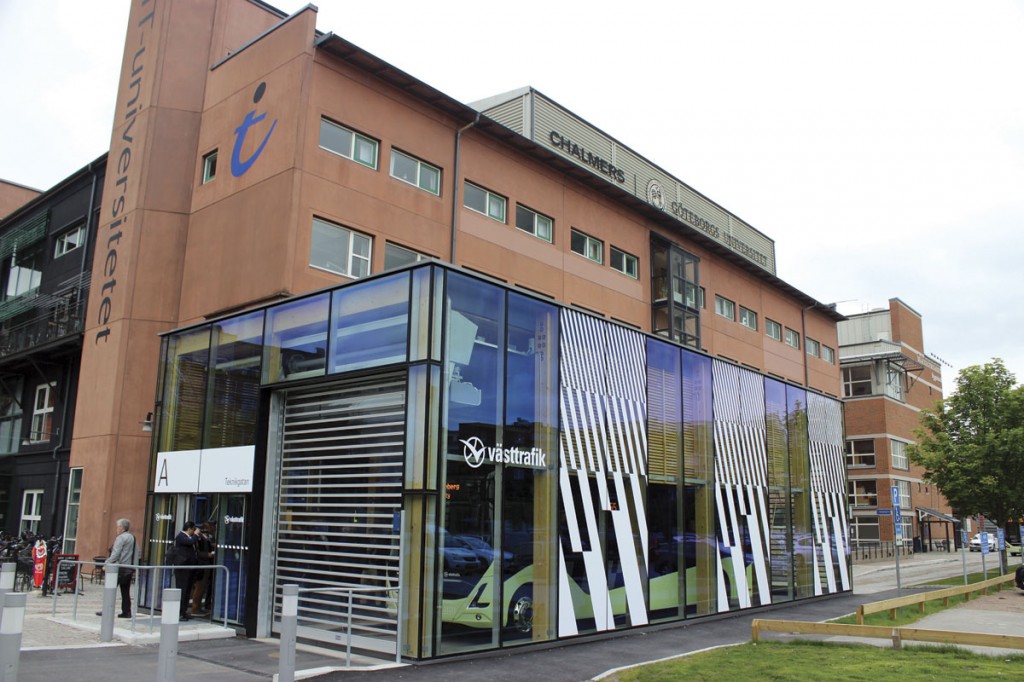
As this bus stop with the bus inside shows, electric buses bring the possibility to locate bus stops within buildings, improving the travelling experience for passengers
Much lower noise levels meant buses could be integrated more closely within the community. In Gothenburg, Volvo ran electric buses through a library and a university café on the 55 route with the support of the city. Volvo’s Adrian Felton saw this as an opportunity and John Trayner agreed this was a valid point. He commented, ‘We do not need the Bus Services Bill, because actually we have partnerships in other places. But the Bus Services Bill will enable us, because I as the operator cannot put that bus priority in; I need someone else to help with that. It is normally the local authority; it is for them to take a wider view that they will actually p**s car drivers off and stop car drivers coming in, because we are grinding to a halt, the air quality is rubbish, and no one goes anywhere. The converse of that is a place like Liverpool, where we have a mayor taking out bus lanes. That is our challenge: how do we as operators influence that sort of decision making that actually benefits all.’
Lianna Etkind of the Campaign for Better Transport thought there was also a rural imperative. John Trayner was blunt in saying, ‘My view about what happens in rural places is there will not be a bus service. There will be an Uber share app that says, ‘Two people want to go to the next village; I’ll put them together and I’ll put you in the back of a car.’ Whether that is an electric car, or whether that is a hybrid, who knows? But if a bus cannot get a demand level that makes it sustainable, we are probably not going to be there.’ Lianna saw this as ‘a dismal prospect.’
In Ian Tarran’s view, ‘As our buses get older in cities, they are going to be pushed out of the cities, as more and more cities will say, “You cannot have a bus that is Euro3” – then Euro4, then Euro6. We buy a bus that is going to last 15 years, and those buses with diesel engines, the dirtier buses, are going to end up in the countryside, where we perceive it does not matter, because there is no air quality problem today. But there might be one.’
Summary
In his summary remarks, Chair, David Fowler said, ‘There is quite a consensus that electric buses in some form are the future. By electric, we mean something that is not purely diesel, so it could be a hybrid, plug-in hybrid or pure electric vehicle capable of operating in some cases purely electrically or purely diesel, depending on the requirements of the particular route. In a city centre it could be all electric, and elsewhere a hybrid might be more suitable.’
‘Air quality is a bigger and bigger driver, both from the point of view of cities and from the point of view of the Department for Transport, as one of the big rationales behind the Bus Services Bill. With or without the Bus Services Bill, there is a lot of enthusiasm for partnership, and there is quite a lot of enthusiasm for Hakan’s idea of the complete turnkey package. There seems to be a feeling that the power generation utilities need to be involved in that, because there might be capital works needed on distribution systems at some point, so they perhaps need to be involved in the conversation at some point. There could be some way of crediting the bus industry with avoided benefits, or the benefits of avoided emissions, not concentrating on the emissions of the bus per se, but the difference it makes by replacing 75 cars.’
‘In terms of attracting people onto buses, it is still reliability and punctuality that are the main drivers, but we can see perhaps where it is possible to get all the ingredients of a pleasant park and ride where you can get on an electric bus that is noise and vibration free, that has Wi-Fi, and has bus priority. That could be quite an attractive proposition. Priority from local authorities is still a bit variable at the moment: some authorities are keen; some authorities do not like upsetting car drivers. This idea of a priority route right into the city and the shopping centre itself, if it is feasible in cities that have enough road space, sounds attractive.’
Last word
Closing the London event, Håkan Agnevall said that he believed ‘electromobility was the way forward but there was still a lot of work to be done. The piloting TfL and others were doing was critical because it gave everyone confidence to take the next step. It was important to continue dialogue. What brought it to the top of the political agenda was air quality. It was an opportunity to show that buses are part of the solution of the future, and with electrical, or electrically assisted buses, it was an even stronger proposition.’
A third event will be held in Bristol or Leeds in the near future.
